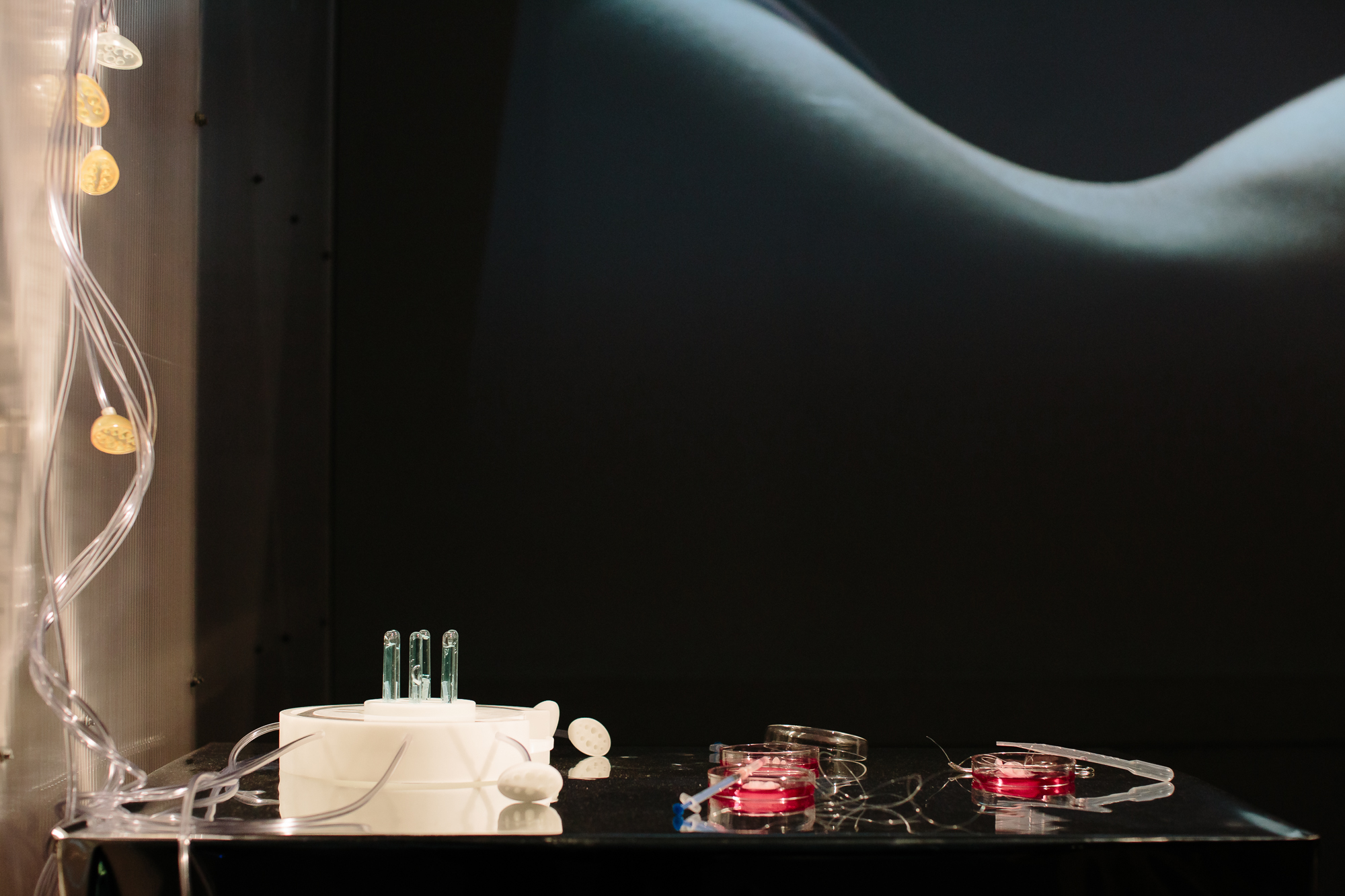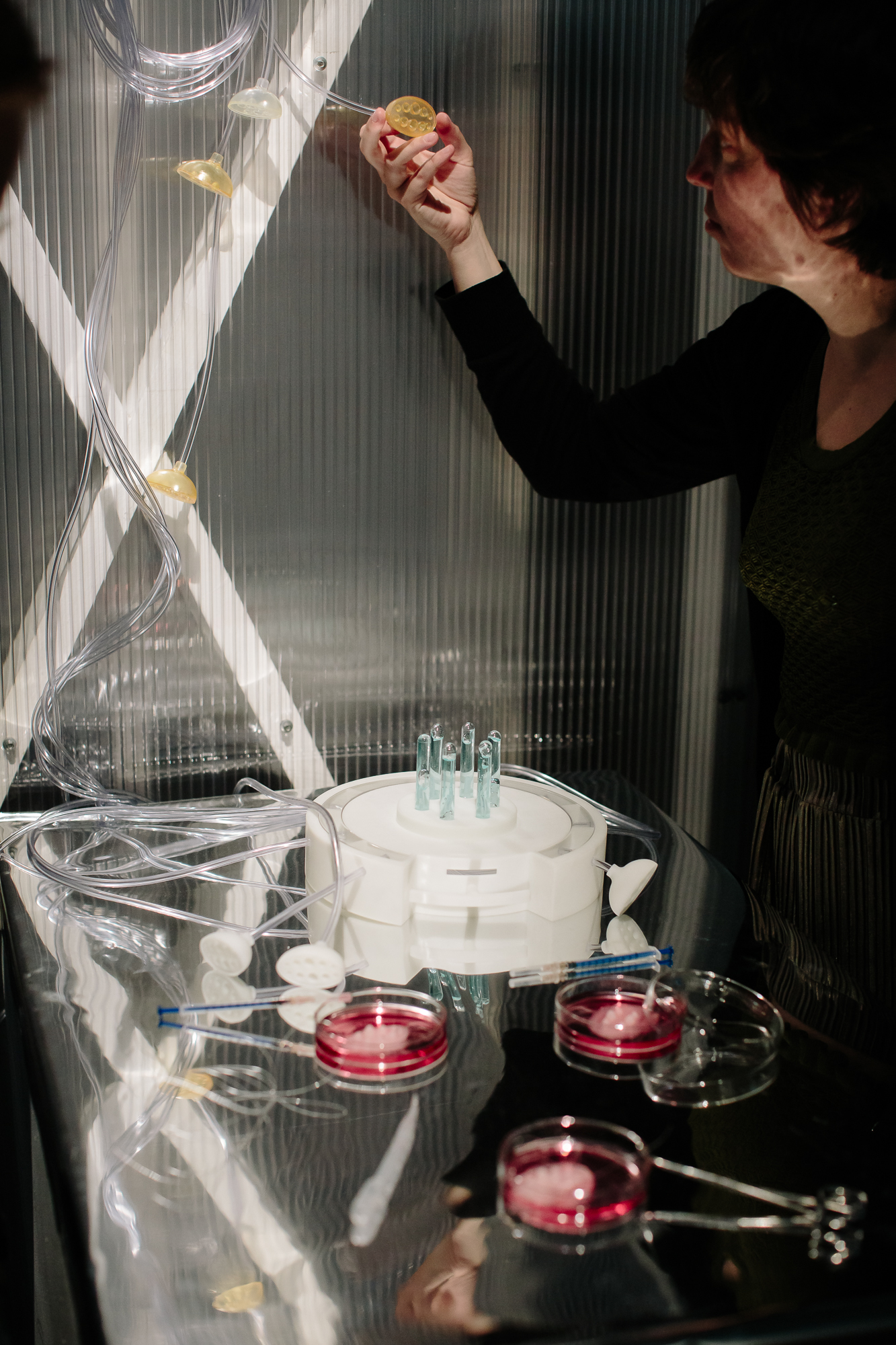Skin Database

SkinDatabase speculates on the possibility of DNA-digital data storage on human skin, and inquiries an alternative relationship between the human body and our digital memories. It imagines that due to the digital data overload, people start to archive information on the skin to take advantage of the outstanding capacity and longevity of DNA-strands. It aims to open discussion on the fast developing DNA-editing technology such as CRISPR could make an impact on our daily routines and potentially shape new social norms. The work was recognized by Falling Walls Science Summit and the Lumen Prize Futures Award.
According to a report from IBM, 90% of the world’s data had been created in the previous 2 years. And data growth continues to explode. However, our current infrastructure can handle only a fraction of the coming data explosion, which is expected to consume all the world's microchip-grade silicon by 2040. Then the question is how can we store all of our data after 2040?


We imagine that by the year 2040, each person will have limited cloud storage while other traditional methods are no longer popular due to the short lifespan and limited capacity. For an average of 30 days, people need to download and archive their data from the cloud to their body and free up space from the cloud storage for the next month.


The work comes with four parts:
MemoryTags: a generic-engineered synthetic skin tissue that transplants into the human body for data storage, which aims to invite audiences to reflect how our body needs to adapt to this alternative human-computer interaction.
TACTAG® machine: a converter that loads digital data into the human body through transplanted MemoryTags. It transfers binary codes into DNA strands by matching the sequence of code (00, 01, 10, 11) with A(Adenine), C (Cytosine), G (Guanine) and T (Thymine) and then make into a gel that can be applied to the body directly. The antenna attached to the device has a wireless connection to the cloud and therefore is able to download digital data. Tubes in the center contain necessary chemical materials for synthesizing DNA strands while the outer circle on the device is divided into several sections in response to different skin areas on the body. A tube is extended from the device, allowing the user to plug into the implant easily.
Embody: a monologue video piece showcases the experience of Ashely, a speculated TACTAG® user who uploads her memory on her body but ends up with unforeseen issues. It not only conveys our product concept design but also intrigues audiences to attend to the intricacy and complex risks behind using nucleic acid as a data storage medium.
TACTAG® manual: a brochure functions as an instructional manual demonstrating how to use the device as well as side effects that may occur. It aims to evoke audiences’ awareness of safety and ethics issues resulting from DNA-editing applications. user instructions, the possible side effects, and background information.




This project inquiries not only a potential practice of biotechnology with an enormous impact on us but also invites reflection on possible modifications on the human body made to better adapt to the digital world. As a speculative design, it is both realistic and fictional. As a creative way to test and examine the hypothesis produced by emerging technology, this design facilitates ways to look forward to helping people better prepared for potential challenges.
Project type: Self-initiated
Exhibition at GrayArea San Francisco
Falling Walls Science Summit Finalist
Lumin Prize Futures Award Short List